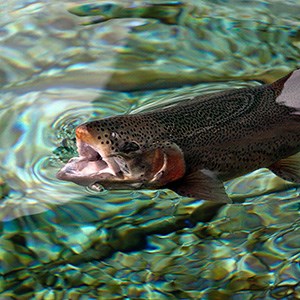
To meet the increasing demand for nutritious and environmentally friendly food worldwide, the production of fish and other seafood needs to increase. One of the biggest challenges for the aquaculture industry is the sustainability of fish feed. Today, fish feed often contains up to 25% fishmeal and oil, as well as 60% plant proteins such as soy protein concentrate and oils. The production of fishmeal and oil faces sustainability issues as most fish stocks are overexploited. Additionally, soy production is associated with negative effects on biodiversity and working conditions.
Another challenge is that the majority of protein feed is imported to Northern Europe, making the system vulnerable to crises, both in terms of availability and price stability. A sustainable future for fish farming, therefore, requires alternatives that are sustainable, can be produced in sufficient volumes, and at the same time, meet the nutritional needs, growth, and health of fish. Grass protein can be part of the solution.
SLU´s part of the project
HUV is exploring the use of green protein from grass and clover as fish feed and whether the byproduct, fiber cake, can be used as feed for other animals such as horses, sheep, and cattle.
Our Work in Four Steps
1. Optimisation of the production process: SLU assists project partners at Aarhus University in the development and selection of the highest-value feed products from green refineries.
2. Analysis of green protein: At SLU, we analyse selected green protein based on production conditions to assess their nutritional content. This allows us to formulate test feeds that meetthe nutritional needs of fish.
3. Formulation and feeding: We formulate feeds containing green protein and conduct initial feeding trials with fish. The experiment will test the effect of green protein on feed quality and digestibility, feed intake, and fish growth.
4. Optimization and longer studies: Based on the results in step 3, we further optimize the feed mixture and conduct more studies with fish to evaluate how green protein in feed affects fish growth, health, and body quality over a longer period. This could help us identify optimal levels of green protein concentrate in fish feed.
Do you want to know more?
Read more about the Green Valley project here:
Linc to project website
More information about other resources connected to the project:
Fish laboratory
Feed Technology Laboratory
Project manager at HUV:
Aleksandar Vidakovic, aleksandar.vidakovic@slu.se

